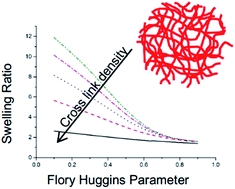Non-aqueous microgel particles: synthesis, properties and applications
Abstract
Microgels are cross-linked polymer latex particles that can form stable colloidal dispersions. Their typical sizes range from 10 to 1000 nm and they can swell in response to their external environment (pH, temperature and solvency). This swelling behaviour is central to many potential applications for microgels. The existing literature is dominated by studies of the properties of aqueous microgel dispersions. In contrast, this review focusses on the development of microgel particles in non-aqueous systems, looking at the challenges of studying these particles as well as their swelling behaviour. The five main mechanisms of producing microgel particles will be discussed and examples of materials used for microgels that swell in non-aqueous solvents will be given. Finally some examples of applications for non-aqueous microgels are given.

- This article is part of the themed collection: Tutorial Reviews in Soft Matter

 Please wait while we load your content...
Please wait while we load your content...